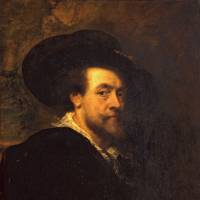Peter Paul Rubens (1577-1640) spent the better part of his childhood in Antwerp, Belgium, but left for Italy at age 20 to learn the history of classical Italian painting. After returning to his native country, he was appointed in 1609 as court painter to the sovereigns of the Netherlands Archduke Albert VII and his wife Isabella Clara Eugenia. At court he set up a huge art studio, and it was during this time that he particularly flourished.
Later, Rubens also turned to diplomacy using his exceptional artistic skills to impress aristocrats in neighboring countries. He is credited with contributing to an important peacy treaty between Spain and Britain in 1629; March 9-April 21.
Bunkamura the Museum; (03) 5777-8600; 2-24-1 Dogenzaka, Shibuya-ku, Tokyo; Shibuya Station, JR Yamanote Line. 10 a.m.-7 p.m. ¥1,500. rubens2013.jp.



